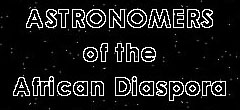

|
George R. Carruthers birth: October 1, 1939 place: Cincinnati, Ohio pre-doctorate education: University of Illinois B.S. Physics (1961), M.S. Physics (1962) doctoral institution: Ph. D. (1964) Aeronautical and Astronomical Engineering - the University of Illinois current employment and position: |
|
Carruthers will forever be remembered as principal inventor of the Far Ultraviolet Camera/Spectrograph that accompanied the Apollo 16 mission. Positioned on the moon's surface, the camera allowed researchers for the first time to examine enormous expanses for concentrations of pollutants in the Earth's atmosphere. Other cameras developed by Carruthers and his colleagues have been aboard space shuttles surveying the ozone layer and to transmit photos of distant stars and planets for computer analysis. He is also credited with helping to introduce electronic telescopes on board NASA satellites that transform light into electrical signals which are relayed to Earth and televised.
| Dr. Carruthers held a position of Rocket Astronomy Research Physicist from 1964 to 1982. He was Head of the Ultraviolet Measurements Branch of the Naval Research Laboratory. An inventor as well as physicist, George Carruthers was instrumental in the design of lunar surface ultraviolet cameras. Dr. Carruthers research focused on research in experimental investigations of atomic nitrogen recombination. Carruthers won the Arthur S. Fleming Award in 1971, the Exceptional Achievement Scientific Award from NASA in 1972, the Warner Prize, and the National Civil Service League Exceptional Achievement Award. In 2003, George Carruthers was inducted into the National Inventor Hall of Fame in Akron, Ohio. In 2004, he was selected one of the 50 Most Important Blacks in Research Science. |
|
At an early age George Caruthers developed an interest in physics, which his father, a civil engineer, encouraged. Carruthers was also an avid science fiction reader and enjoyed constructing model rockets. Born in Ohio, he grew up on the South Side of Chicago, graduated from Englewood High School in 1957, and entered the College of Engineering at the University of Illinois. He earned a B.S. in physics in 1961 and a M.S. in 1962; in 1964 he earned his Ph.D. in aeronautical and astronautical engineering, with a thesis written on atomic nitrogen recombination. In 1964 he was awarded a National Science Foundation fellowship in rocket astronomy at the Naval Research Laboratory in Washington, D.C.
In 1966, Carruthers became a research assistant at the Navy's E. O. Hulburt Center for Space Research, and here he began the work that would occupy him for much of the next several decades: the development of imaging devices to elucidate the make up of deep space. In particular, he concentrated on ultraviolet imaging mechanisms and spectroscopy--the use of the color spectrum of substances to detect their constituent parts. In 1969, he patented an image converter for detecting electromagnetic radiation. He then invented the Far Ultraviolet Camera/Spectrograph, a device which would examine both the Earth's atmosphere and deep space from a location that would avoid the distortions created by Earth.
Carruthers's imaging device was designed in effect to use the moon as a deep-space observatory. It took several years for the idea to become reality, but by 1972 Carruthers's camera/spectrograph was constructed--a gold-plated instrument mounted on a tripod. Commander John W. Young carried the device aboard the Apollo 16 mission and placed it on the surface of the moon. Over 200 pictures of the Earth's atmosphere and geocorona, as well as of the Milky Way and deep space, were taken from this lunar observatory. Much was learned about the Earth's atmosphere, including possible new ways to control air pollution. Most startling of all was the detection of hydrogen in deep space. This was evidence that plants are not the only source of Earth's oxygen, and the discovery also led to new thinking on the origins of stars. Carruthers' camera was also used on Skylab 4, when it observed Comet Kohoutek in 1974.
A private man, Carruthers devotes his life to his research and is characteristically low-key about his own contributions. Married in 1973, he has continued his work at the Naval Research Laboratory, developing a telescope to be used in space, as well as other photometric devices. A member of the American Astronomical Society and several other professional organizations,
References: [Carwell, p. 48.]; Fikes: From Banneker to Best: Some Stellar Careers In Astronomy and Astrophysics; Mickens, The African American Presence in Physics; [Van Sertima. p. 258-262.],
VISITORS
since opening 5/27/1997
![]()
| This website was created by and is
maintained by Dr. Scott Williams, Professor of Mathematics State University of New York at Buffalo |
SEARCH the site |
|
|
![]()